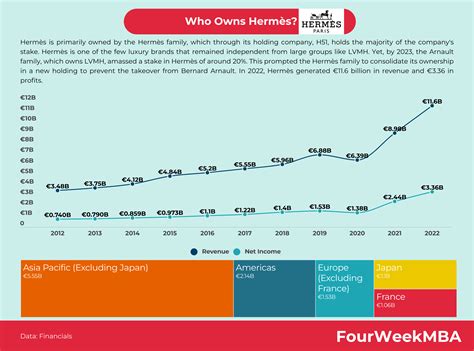hermes brand experience | who is Hermes owned by hermes brand experience Hermès stands out in luxury. Its marketing is subtle, but the impact is powerful. The brand's strategy focuses on scarcity and status, creating a brand experience that other fashion . Toggle. Louis Vuitton Logo Appearance. Logo Shape. Logo Colors. Logo Font. Louis Vuitton Logo Symbolism. The Monogram. Symbolism of the Colors. Louis Vuitton Logo Creation and History. Last Updated on August 17, 2023.
0 · who is Hermes owned by
1 · when was Hermes founded
2 · hermès founder
3 · brands owned by Hermes
4 · Hermes brand origin story
5 · Hermes brand identity
6 · Hermes background information
7 · Hermes background history
Así son los tenis y la colaboración que no podemos esperar a llevar. Nike y Louis Vuitton exponen los tenis que serán objeto de deseo. Los Nike Air Force 1 siguen cautivando, y ahora llevarán un aclamado monograma francés. Por Melisa Vargas. 28 .
Hermès stands out in luxury. Its marketing is subtle, but the impact is powerful. The brand's strategy focuses on scarcity and status, creating a brand experience that other fashion .
By positioning itself as a brand that offers a distinct and unparalleled luxury experience, Hermès creates a perception of exclusivity and sophistication among its target .
who is Hermes owned by
when was Hermes founded
The immersive, Instagrammable experience was perfectly pitched at younger consumers, but it also drove home the point that even the most delicate Hermès products, such as the iconic silk square,.Hermès regularly showcases its artisans and their meticulous work process in marketing materials and through in-store experiences. This focus on heritage and craftsmanship reinforces the . Central to Hermès’ enduring success is a meticulously crafted marketing strategy that underscores the brand’s core values of heritage, craftsmanship, and exclusivity. For marketing professionals, understanding . As Hermès continues to thrive, partially attributed to an operating income growth of 6% and a net profit increase of 15% from 2017 to 2018, it’s evident that the brand’s success is .
From impeccable product design to immersive brand experiences, Hermès employs a blend of innovative approaches to solidify its position as a leading fashion house. Here, we . Key Insights. Foundational history: Hermès was founded in 1837 by Thierry Hermès as a maker of saddles and leather goods for European royals. Iconic brand and products: . So what makes the Hermes brand endure? The four steps below, inspired by Hermes’ story, can serve as a foundation for any brand. Build a Product with a Promise. "We .According to global brand valuation firm Interbrand, Hermès came in 28th amongst the Best Global Brands 2020. With a brand valuation of USD 18.0 billion, it trails behind Louis Vuitton, ranked 17th with a valuation of USD 31.7 billion.
Hermès stands out in luxury. Its marketing is subtle, but the impact is powerful. The brand's strategy focuses on scarcity and status, creating a brand experience that other fashion houses cannot compete with. Hermès stays on top for this very reason. By positioning itself as a brand that offers a distinct and unparalleled luxury experience, Hermès creates a perception of exclusivity and sophistication among its target audience. Hermès’ STP analysis highlights its strategic approach to segmentation, targeting, and positioning in the luxury market. The immersive, Instagrammable experience was perfectly pitched at younger consumers, but it also drove home the point that even the most delicate Hermès products, such as the iconic silk square,.
Hermès regularly showcases its artisans and their meticulous work process in marketing materials and through in-store experiences. This focus on heritage and craftsmanship reinforces the brand's luxury positioning and fosters consumer trust in the quality and durability of its products. Central to Hermès’ enduring success is a meticulously crafted marketing strategy that underscores the brand’s core values of heritage, craftsmanship, and exclusivity. For marketing professionals, understanding Hermès’ strategy offers valuable insights into building and maintaining a high-end brand. As Hermès continues to thrive, partially attributed to an operating income growth of 6% and a net profit increase of 15% from 2017 to 2018, it’s evident that the brand’s success is as multi-layered as its famed leatherwork.
From impeccable product design to immersive brand experiences, Hermès employs a blend of innovative approaches to solidify its position as a leading fashion house. Here, we delve into key marketing strategies that have propelled Hermès to . Key Insights. Foundational history: Hermès was founded in 1837 by Thierry Hermès as a maker of saddles and leather goods for European royals. Iconic brand and products: Assuming leadership in 1978, Jean-Louis Dumas transformed Hermès into a global luxury brand. So what makes the Hermes brand endure? The four steps below, inspired by Hermes’ story, can serve as a foundation for any brand. Build a Product with a Promise. "We don't have a policy of.According to global brand valuation firm Interbrand, Hermès came in 28th amongst the Best Global Brands 2020. With a brand valuation of USD 18.0 billion, it trails behind Louis Vuitton, ranked 17th with a valuation of USD 31.7 billion.
hermès founder
Hermès stands out in luxury. Its marketing is subtle, but the impact is powerful. The brand's strategy focuses on scarcity and status, creating a brand experience that other fashion houses cannot compete with. Hermès stays on top for this very reason. By positioning itself as a brand that offers a distinct and unparalleled luxury experience, Hermès creates a perception of exclusivity and sophistication among its target audience. Hermès’ STP analysis highlights its strategic approach to segmentation, targeting, and positioning in the luxury market. The immersive, Instagrammable experience was perfectly pitched at younger consumers, but it also drove home the point that even the most delicate Hermès products, such as the iconic silk square,.Hermès regularly showcases its artisans and their meticulous work process in marketing materials and through in-store experiences. This focus on heritage and craftsmanship reinforces the brand's luxury positioning and fosters consumer trust in the quality and durability of its products.
Central to Hermès’ enduring success is a meticulously crafted marketing strategy that underscores the brand’s core values of heritage, craftsmanship, and exclusivity. For marketing professionals, understanding Hermès’ strategy offers valuable insights into building and maintaining a high-end brand. As Hermès continues to thrive, partially attributed to an operating income growth of 6% and a net profit increase of 15% from 2017 to 2018, it’s evident that the brand’s success is as multi-layered as its famed leatherwork.
From impeccable product design to immersive brand experiences, Hermès employs a blend of innovative approaches to solidify its position as a leading fashion house. Here, we delve into key marketing strategies that have propelled Hermès to .
Key Insights. Foundational history: Hermès was founded in 1837 by Thierry Hermès as a maker of saddles and leather goods for European royals. Iconic brand and products: Assuming leadership in 1978, Jean-Louis Dumas transformed Hermès into a global luxury brand.


brands owned by Hermes

Hermes brand origin story
Hermes brand identity
Hermes background information
Coeur Battant. Call for inquiry. Available exclusively on louisvuitton.com and in selected Louis Vuitton stores. Order your Louis Vuitton fragrance and receive a complimentary sample so you can discover the fragrance before wearing or gifting it.
hermes brand experience|who is Hermes owned by



























